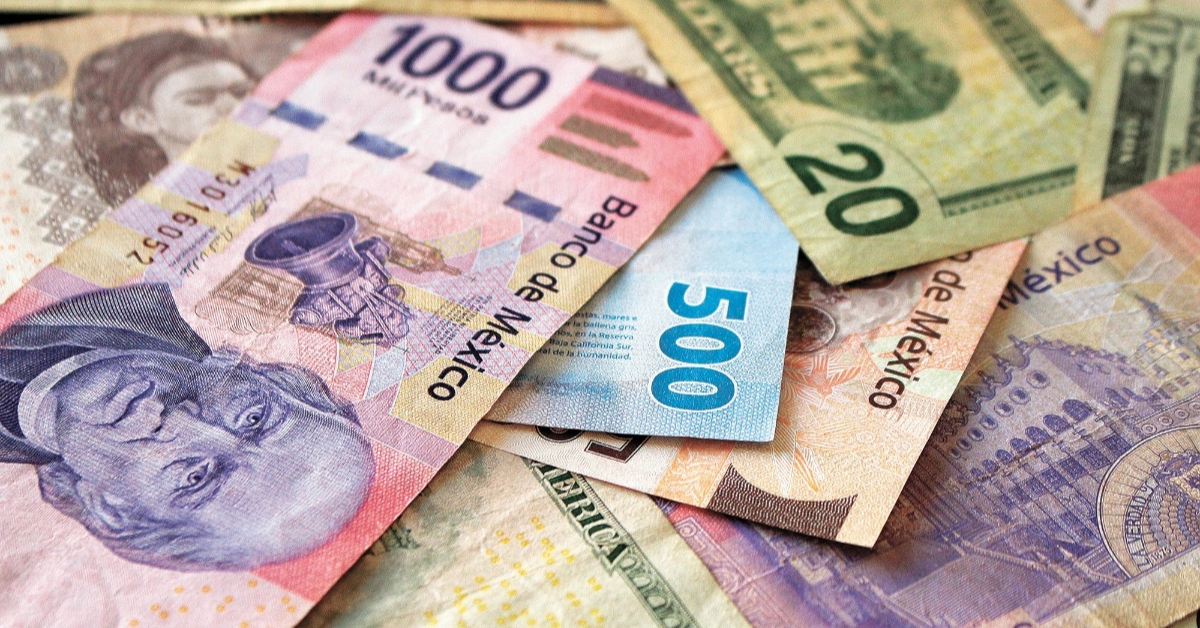Puerto Vallarta, Mexico – The Mexican peso appreciated on Monday as investors reacted to local inflation data that came in lower than market expectations, while also keeping a close eye on developments surrounding a controversial judicial reform. The domestic currency, MXN, was trading at 19.8519 units per dollar, marking a 0.59% increase from Friday’s Reuters reference price.
Lower Inflation Spurs Peso’s Strength
On Monday, the National Institute of Statistics and Geography (INEGI) released inflation data showing a minimal rise in the consumer price index (CPI) of just 0.01% in August. This figure came in significantly lower than the 0.07% expected by economists and market analysts.
Core inflation, which excludes volatile items like food and energy, rose by 0.22% month-over-month, slightly below the anticipated 0.23%. These results drove Mexico’s headline inflation down from 5.57% to 4.99%, while core inflation edged down from 4.05% to 4.00%.
“The fact that inflation rose less than expected indicates a stabilization of prices, which is favorable for the peso. These results show that inflationary pressures are easing, helping to maintain confidence in Mexico’s financial system,” noted an analysis by financial consultancy firm VectorAlisis.
Lower inflation generally provides a positive signal for investors, as it reduces the likelihood of sharp interest rate hikes by the central bank. This, in turn, boosts confidence in the Mexican peso and attracts foreign investments, seeking to take advantage of Mexico’s favorable interest rate differential.
Controversial Judicial Reform Raises Concerns
While the peso’s appreciation was fueled by favorable inflation data, political developments in Mexico also captured the attention of both local and international investors. On Sunday night, Mexican senators approved a contentious judicial reform that proposes electing judges, magistrates, and ministers of the Supreme Court by popular vote.
The reform has sparked widespread debate, with critics arguing that it threatens the independence of the judiciary by subjecting judges to political influence. Supporters of the measure, primarily from the ruling party, Morena, claim that the reform will make the justice system more accountable to the public and help fight corruption.
Currently, judges and Supreme Court ministers are appointed through a process that includes nominations by the president and approval by the Senate. The proposed changes aim to overhaul this system by allowing voters to directly elect high-ranking judicial officials.
Opponents of the reform, including several legal experts and opposition political parties, have warned that such changes could undermine the rule of law in Mexico and compromise the impartiality of the judicial system. The reform is now set to proceed to the lower house of Congress, where it is expected to face further scrutiny.
Market Reactions
Despite the controversy surrounding the judicial reform, the peso’s recent performance underscores a broader trend of resilience. The combination of lower-than-expected inflation and anticipation of economic stability has bolstered confidence in the peso, particularly as the U.S. dollar showed signs of weakening in recent weeks.
Investors are now closely watching how Mexico’s central bank, Banxico, will respond to the latest inflation data in its next monetary policy decision. Although inflation is trending downward, it remains above Banxico’s target of 3%, which means that the central bank may maintain its cautious stance on interest rates in the near term.
“The latest inflation data gives Banxico some breathing room to hold interest rates steady, especially if inflation continues to decelerate. However, political uncertainties, particularly the proposed judicial reform, could create some volatility in the peso moving forward,” said an analyst from a major investment bank.
Outlook
The appreciation of the Mexican peso reflects the market’s positive response to lower inflation and its cautious optimism regarding Mexico’s economic trajectory. However, the potential ramifications of the judicial reform and its impact on institutional stability will remain key factors in shaping investor sentiment in the coming months.
As Mexico navigates these political and economic challenges, the peso’s performance will likely remain sensitive to both domestic policy changes and external factors, such as U.S. economic data and global market conditions. Investors will continue to monitor the evolving situation closely, as any shifts in Mexico’s legal and financial landscape could have significant implications for the currency and broader economy.
In the meantime, the peso’s appreciation on Monday underscores its current strength and reflects the balancing act Mexico faces between fostering economic growth and navigating complex political reforms.
Puerto Vallarta, Mexico - The Mexican peso appreciated on Monday as investors reacted to local inflation data that came in lower than market expectations, while . . .












